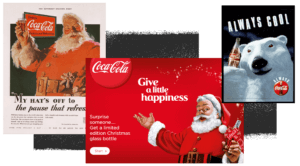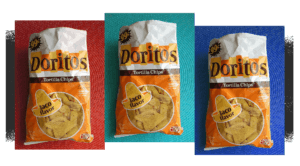I remember my first concert like it was yesterday. At 12 years old, a devoted Jonas Brothers fan, I jammed out like it was the Year 3000 in an arena full of excited tweens and overzealous parents. To my dismay, the band broke up in 2013. As soon as I heard the band was getting back together, I cherished the idea of getting to see them live again. It’s an odd feeling, really. Much older now, I don’t often listen back to my childhood music. My music preferences have evolved since my preteen years, but I’m convinced that music brings back memories of simpler times, before the world grips our throat and throws us into a life of adulting. Our visual senses do a great job of transporting us to times of the past.
Likewise, brands have great opportunities to resonate with consumers when they speak to the memories of consumers. If satisfied after the first interaction with a product or experience, people will return by association. I believe brand recognition is a short-term form of nostalgia. If your initial experience at a music festival is astounding, you’re likely to return to that same event year after year. Eventually, brand loyalty develops. The longing for deafening music surrounded by your friends becomes prominent. As the years go by, the fondness and familiarity of those interactions and experiences develops to nostalgia. At any age, we can remember the people, places, and things of our past that played a role in who we are today. In a visual world, design can help spark those memories. By referencing specific visual styles of decades past, brands have successfully maintained their presence in the commercial sphere. Building authentic stories and heritage into a brand can promote its longevity.

COKE OR PEPSI (The Debate of Decades)
My cravings are currently skewing to food-focused brands, so it seems fitting to take a look at an American staple. Mainstream brands like Coca-Cola have embraced the warmth of nostalgia through their advertising strategy. Their Christmas campaigns often feature older illustrations of Santa Claus and polar bears, using those same characters and styles. They’ve joined the plethora of brands who have embraced the return of vintage and retro packaging, hoping to inspire some of the attributes of which we long for – simpler times and happier days. In 2018, Pepsi released throwback designs of their most popular drinks including Diet Pepsi and Mountain Dew. Coca-Cola and Pepsi have maintained themselves as leaders of the American drinkscape for decades.
“Since our brand was founded more than a century ago, Pepsi has stood for a youthful spirit and the choice of a new generation. 2018 will be a year to celebrate the past while embracing the future; always reminding consumers to do what they love and have a little fun in their lives.
Chad Stubbs, Vice-president, Marketing, Pepsi North America

CHIPPING AT THE PAST
Many food brands revived packaging from the late 1900s. Doritos recently released retro packaging first used in the 1970s. Pop culture has relished in the visual styles of the past decades. While these packaging updates won’t be permanent, they speak to the impact that nostalgia has on our lives. Going to the movie theater, attending a baseball game, or eating a meal at the dinner table in those days involved more than just food and drinks, it meant spending time with friends and family. The vintage packaging not only follows the trend, it prompts thoughts of the past. Whether consciously or subconsciously, these brands aim to associate those positive feelings to their products.

Aside from food and drinks, nostalgia seems to creep itself into other platforms as well. Nostalgia impacts both boomers and millennials with generational crossover. Social media trends like #ThrowbackThursday and #FlashbackFriday have shown that even younger ages are starting to feel the warm, fuzzy feelings of nostalgia. While maybe not dwelling fondly of their time in diapers, younger people have gravitated to forming meaningful connections. TV shows from the 90’s such as Friends have been proven to be one of the most successful programs among ages 10-21, even with those that didn’t have a conscious memory in that decade. Generation Z wants to live in a time before phones and have relationships with their friends in real life. They use social media as an outlet to express their thoughts, connect with others, but still long for authentic experiences with those around them. Brands must allow their products and services to live past the superficial. When brands carry a story and place high regard on human interaction, they can successfully share that through meaningful design.
Nostalgia can be quite a challenge for organizations solely focused on pursuing the new. Looking backward instead of forward, it presents itself as the antithesis to progress. Big brands have strategized to use nostalgia as a way to boost sales. Nostalgia allows a great amount of authenticity, using honest memories to transcend the present, stirring emotions that aren’t abrupt or impulsive. Nostalgia is looking through photographs of the past, where memories are rekindled and transcend the present. Design provides the same feelings in a different context. It demands us to take a look behind us, see the impact of history, and reminisce on the experiences we’ve lived through. By referencing past styles in fashion, visual design, film and other visual media, brands can achieve emotional impact and greater relevance within the culture. It’s a kick in the rear, but it helps push us forward.

